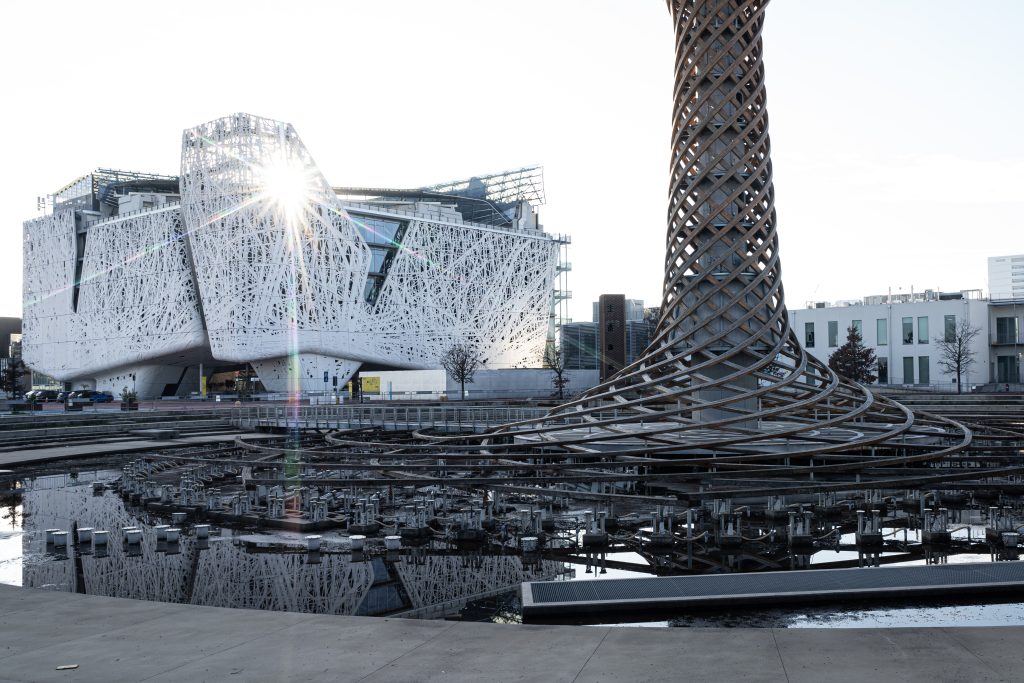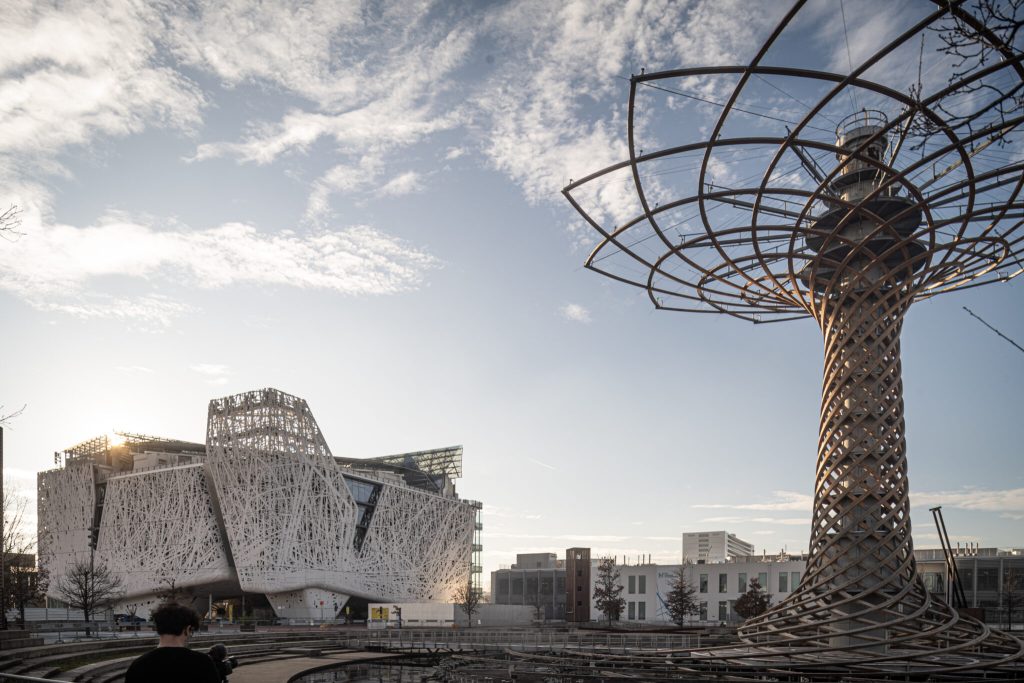Introducing Magda Bienko

Magda Bienko will be joining HT from the Science for Life Laboratory at the Karolinska Institute in Stockholm, Sweden, where she has led her research group for the past seven years as a SciLifeLab Fellow. Magda did her postdoc with Alexander van Oudenaarden at MIT in Boston and her PhD with Ivan Dikic at the Goethe University in Frankfurt, Germany after graduating from the Jagiellonian University in Krakow, Poland where she studied biotechnology.
She plans to start in HT in August 2022 but is already in the process of building her dream team where scientists from various disciplines come together to pursue interdisciplinary research.
Did you always know you wanted to be a scientist?
Oh yes! Ever since I was a child, I knew I wanted to become a scientist and biology has always been my passion. In fact, I never considered any other path for myself. I read the biography of Alexander Fleming when I was in primary school and that was it—I knew what I wanted to do. Back then I also participated to Biology Olympics, and I bought myself a red Russian microscope with my first savings. My deep passion for molecular biology continued to grow in high school, when an excellent chemistry teacher introduced me to the beautiful world of organic chemistry and the molecules of life. This is when I fell in love with DNA, which is still at the core of my research activity after so many years
What will you be working on at the Genomics Research Centre?
DNA biology is my passion and at HT I will continue working on this fascinating molecule that never stops surprising me. I am deeply interested in understanding how DNA is packaged in each one of our tiny cells and what happens when packaging goes wrong. To give you an idea, our body has almost 40 trillion cells and each of these cells has a nucleus with a diameter hundred thousand times smaller than a meter, in which two meters of DNA are packed. Isn’t that amazing? Over the past decade, there has been an explosion of technologies that for the first time allow us to study how this amazing packaging works from very small scales up to the level of the entire complement of chromosomes in the nucleus. Thanks to these technologies we now start to understand better and better how DNA folds into well-defined structures and how this packaging affects the function of our genome. The next frontier is trying to understand how other types of molecules, such as RNAs and proteins, contribute to this extraordinary architecture and how disruption of the three-dimensional organization of the genome in the nucleus can lead to major diseases such as cancer and neurodegenerative disorders. For this, we need to develop novel techniques to be able to look at multiple aspects of genome organization simultaneously, in thousands of single cells from healthy and diseased tissues. This will be my focus at the Genomics Research Centre at HT.
Tell us a bit more about your research. What is the most fascinating aspect of it?
I study how the genome is spatially organized in the nucleus of our cells and how this is crucial for their proper functioning. For example, did you know that it is thanks to how the genome is folded in 3D that nocturnal animals can see in darkness? Or that the 3D spatial arrangement of the genome is critical for our ability to smell? These are the types of discoveries that excite me, and I believe that by now we have only touched the tip of the iceberg in our quest for understanding the functional implications of 3D genome organization. The arrangement of the genome in 3D adds so much extra complexity to how the genetic code is read, which can make you feel disoriented but at the same time is hugely fascinating. Luckily, I am not a person who gets easily overwhelmed. I take this as an amazing opportunity to put my curiosity and all my skills into practice and help us learn more and more about all the mysteries hidden in the spatial arrangement of our genome and chromatin in the nucleus.
What is for me the most fascinating aspect of being a researcher? To be always exposed to new concepts and ideas and to interact with people with very diverse cultural and scientific backgrounds. You can learn a great deal from seeing how different people approach the same problem, observe the same phenomenon from different angles and come to the same solution along different paths. In this sense, I believe that being a researcher also teaches me how to be a good citizen of today’s complicated world, because I learn to respect and value different points of view and to collaborate with others to solve complex problems.
How did you learn about Human Technopole and what inspired you to apply?
My husband is Italian, so I got to know about the plan to build HT in the former Expo area from him a few years ago. But I never really had HT in my head until I learnt about the Centre for Genomics and the vision to make HT a hub for genomic sciences and technologies in Italy. I believe Italy must strengthen its visibility in the international arena of genomic sciences and HT represents a great opportunity towards this goal. In particular, the field of spatial genomics, in which I conduct my research, is still underrepresented in Italy, despite the presence of excellent groups working in this field. Joining a newly born institute is of course a risk, but also a great opportunity for me because I can contribute to shape the institute’s grand vision and research trajectory for the coming years. It is also great to be in a place full of people I had never worked with before, full of creative energies, where new collaborations can form and lead to unexpected research directions. Finally, I am excited to see that HT is truly developing as an international institute, with a non-Italian Director and many foreign researchers like myself being actively recruited. I think cultural diversity is a key factor promoting scientific excellence and therefore I am very pleased to see that HT is being shaped as an international and culturally rich research hub.
Research can have many ups and downs, big successes but also disappointing moments. How do you find motivation when it is lacking?
Research is very much like running a marathon—you need a lot of patience and endurance to cope with experiments that fail or that do not bring the results one hoped for. I am lucky, because I am extremely patient and determined to make things work even if this requires a lot of trials and errors and troubleshooting. I have to say that, after many years of doing this wonderful job, I have developed a good intuition of whether an experiment that did not work the first or second time will eventually succeed or is destined to fail. In this way, I can motivate my students and postdocs to try harder until their experiments succeed if I know that there are good chances for this to happen, provided the right amount of time and patience. But sometimes, a research path that we take thinking that it will work out smoothly will eventually prove much harder to follow. Here, what distinguishes a mature researcher from a less experienced one is the ability to stop this type of projects before they go on for too long. Ending projects is of course very hard to do, but sometimes is unavoidable and after a phase of ‘depression’ you see that people are becoming excited again and ready to pursue a new path. This is how research works and I am very happy to see that, thanks to all the experience I have matured over the past 18 years of doing research, I now take these up-and-down cycles as something very natural and don’t worry much about them.




